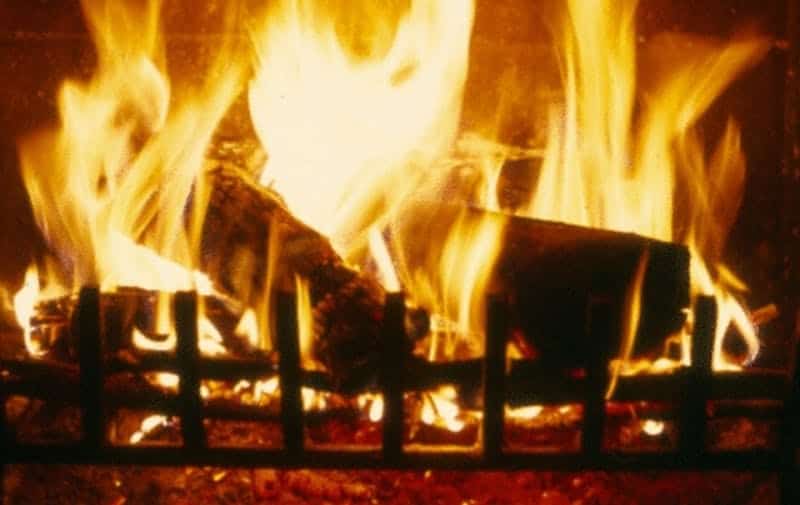Introduction
Like many of our traditions, the burning of the Yule log was started by the Norwegians, and begun long before the celebration of Christmas.
In order to understand why the log was burnt, and why this was a ceremony for such a long time (and still is, in some areas of the world), it is important to first understand what it signifies.
It should be kept in mind, as well, that back during the time that burning a Yule log was not simply a tradition, but a necessary way of life.
The peoples of this time period, which was before the middle ages, had a firm belief in the metaphysical aspects of the world, and as such practiced sacred traditions such as these in order to co-exist with the land and earth spirits in harmony.
The Origins of the Yule Log
At the time of year that this log is burnt, we rejoice in the coming of the new year, which brings with it spring and a time of rebirth.
To usher in the new year, people would burn Yule logs in celebration (at a feast) in December in order to burn away everything that happened from the year before and to start this new year fresh.
The remains of the Yule log were used in medicinal purposes, to ward off evil spirits, and as a fertilizer for plants.

Back then, civilizations that burned these logs also believed that the ashes would ward off lightning, which could be devastating given during that time period, all of the buildings were made of wood.
A single strike of lightning could burn a whole village.
Originally, the Yule log was not really a log but was a carefully picked tree.
The act of acquiring this tree and carrying it into your home was considered to be a sacred tradition, and the ceremony was held in high reverence.
The tree would then be lit by the remains of the last remaining log of last year’s Yule tree, and the tree would start in the fireplace, and continue out onward into your living space.
The log was not continuously burned, and the whole family would perform the lighting ceremony each night, for 12 consecutive nights.
After these 12 nights, whatever of the tree was left would be kept for next year, as kindling to light the new Yule tree.
The Yule Log in Later Years
Unlike other heathen traditions, the burning of the Yule log continued after the birth of Christianity, but at a much smaller scale.
The burning of the log was done only on Christmas Eve, and with the passing of time, the fireplaces that were built in the common household were not big enough to accommodate such a huge item; and as such, smaller Yule logs were then burned.
(Perhaps cutting down the size to accommodate the size of the fireplaces is why buying a Yule tree was not as widely practiced, and evolved into burning a much smaller log).
Eventually, people began to realize that these fireplaces were the perfect size for cooking, and somehow along the way the tradition of baking a chocolate “yule log” came into existence.
This origins of the edible Yule log is not as clear, but we can surmise that the idea came into existence around 1600 AD.
In the 19th century, Persian bakers are the ones responsible for popularizing this holiday treat, and is still a tradition today; although only a few people practice its application.
Although in today’s modern age you can simply go and pick up a sweet roulade in almost any grocery store year-round, it is interesting to know where and how this confection came into existence.
Learn More With the Help of Video
Main Points About History of Yule Log
- The Yule log is a special log chosen and burnt in the heart on Christmas eve.
- It is a tradition that has been traced way back before the Medieval times to the nomadic tradition. Yule was the darkest time of the year.
- Back then, the Celtic Brits and Gaelic Europeans would gather logs to welcome the winter solstice towards the end of December.
- Once burned, the yule log ashes were treasured. They were used for medicinal purposes and to ward off evil.
- When Christianity became popularized, the Yule log tradition was adopted, but on a smaller scale. The yule log is believed to be symbolic of the emergence of the sun.
Conclusion
In many countries in Eastern Europe, such as Croatia and Bulgaria, a Yule Log of wood is brought into the house on Christmas Eve. It’s a Nordic tradition, from before Christianity came to Scandinavia.
The log was from the beginning of a whole tree and brought into the house during Winter Solstice with a big ceremony.
In the UK and America, this tradition has turned into a smaller version – a delicious cake in the same shape.
Word Cloud for History of Yule Log
The following is a collection of the most used terms in this article on the History of Yule Log. This should help in recalling related terms as used in this article at a later stage for you.

- https://en.wikipedia.org/wiki/Yule_log
- https://qz.com/quartzy/1165055/the-yule-log-a-pagan-ritual-turned-youtube-phenomenon/
- https://www.snopes.com/fact-check/yule-log/

This article fails to acknowledge the modern interpretation of the Yule log, which involves sweet confections like the chocolate yule log. The evolution of the tradition is equally noteworthy and should be given due credit.
I agree with Ben30, the article could have provided more insights into the modern adaptations of the Yule log tradition to offer a comprehensive perspective.
The historical significance of the Yule log and its enduring presence in various cultural customs is thought-provoking. The article effectively captures the essence of its evolution and adaptation.
Indeed, the article provides valuable insights into the traditions associated with the Yule log, contributing to a deeper understanding of its cultural importance.
I concur with Lucas36, the article offers a comprehensive overview of the Yule log tradition, shedding light on both its historical roots and contemporary applications.
The article provides a comprehensive overview of the historical aspects and cultural significance of the Yule log tradition. It offers valuable insights into its enduring presence in different customs and celebrations.
While the article presents a detailed account of the historical significance of the Yule log, it could have delved further into the influence of modern traditions such as the chocolate yule log. A more comprehensive overview would enhance the article’s credibility.
I echo the sentiment, the balance between historical information and contemporary adaptations is essential to provide a holistic understanding of the Yule log tradition.
I agree with Russell Samantha, incorporating insights into modern interpretations would add depth to the article’s exploration of the Yule log tradition.
I found the details about the medicinal use and spiritual beliefs associated with the Yule log ashes particularly intriguing. The ancient traditions are deeply rooted in cultural heritage.
Indeed, the article sheds light on lesser-known aspects of the Yule log tradition, which adds to its historical and cultural significance.
The history of the Yule log is truly fascinating. Learning about its ancient origins and cultural significance is enlightening.
Absolutely, it’s amazing how the tradition has evolved over time and continues to hold symbolic meaning.
The article offers a compelling portrayal of the ancient Yule log tradition and its enduring legacy. The historical insights provide a captivating narrative of its cultural significance.
Absolutely, the depth of historical context in the article enriches our understanding of the Yule log tradition, capturing its significance across different periods of time.
The detailed account of how the Yule log tradition was adapted over the years, from its origins to modern applications, is engaging and well-presented.
I share the sentiment, the article is both informative and captivating, offering a holistic view of the Yule log tradition throughout history.
This is an interesting and informative article. I appreciated learning more about the origins of the Yule log and its significance in different cultures.
I agree, the article provides detailed information about the Yule log tradition and its historical roots.
The transition from the burning of huge Yule logs to the tradition of baking a chocolate yule log is quite an intriguing evolution. The article captures the essence of this transformation effectively.
Absolutely, the historical context combined with the evolution of the Yule log tradition provides a comprehensive understanding of its cultural significance.
I concur with Cooper Finley, the article effectively encapsulates the journey of the Yule log tradition from ancient times to its modern-day interpretations.